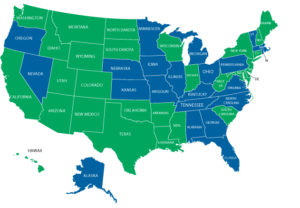-
SSI's Thorny Rules for "Deeming" a Parent's Income to a Child
-
- Care Planning
- Caregivers
- Community Outreach
- Elder Law
- Elderly
- Estate Planning
- Health Care Surrogate
- Jacksonville
- Life Care Planning
- Living Will
- North Florida
- Orange Park
- people with disabilities
- People with Intellectual or Developmental Disabilities
- Planning
- Resources
- Social Security
- Social Security Administration
- Social Security Disability Insurance
- Special Needs Planning
- Special Needs Trust
- SSDI
- St. Augustine
- Supplemental Security Income
Five Practical Uses for an ABLE Account
We have previously written about the pros and cons of ABLE (Achieving a Better Life Experience Act of 2014) accounts. These accounts allow many people with disabilities or their families to establish tax-free savings accounts that won’t affect their ability to qualify for, or remain on, government assistance as long as the account balance does not exceed $100,000. But ABLE accounts can be more than simply a savings vehicle. The accounts can be used in many creative ways, either alone or in conjunction with other planning tools, to make a big difference to families with special needs children.

Any adult child with special needs who owns more than $2,000 in countable assets is generally ineligible for many public benefits programs, including Medicaid and Supplemental Security Income (SSI). But because an ABLE account with a balance below $100,000 is not counted as a resource for most public benefits programs, the account provides an opportunity for planning to ensure that the child does not become ineligible because of wages, gifts, or other sources of funds that may become available to her. Here are five practical uses for an ABLE account that could have a significant impact on a beneficiary’s quality of life:
Protecting UGMA/UTMA account funds: Does your child have a savings account in his or her own name? Perhaps gifts from family over the years were deposited into the child’s account? Such an account is often known as an “UGMA (or UTMA) account,” named after the Uniform Gifts (or Transfers) to Minors Act, the law that governs bank accounts owned by minors.
When the child becomes an adult, that bank account will suddenly be counted as a resource for purposes of determining eligibility for many public benefits programs. One practical use of an ABLE account is as a repository for money from an UGMA/UTMA account of a child who is coming of age so that it will not be counted in determining her continued eligibility for public benefits.
Shielding income: Another practical use for an ABLE account is as a receptacle for child support, alimony, or even earned wages. Using an ABLE account for sources of income such as these shields them from being counted as a resource of the child. If more than $2,000 is accumulated by the child over time in an ABLE account, the eligibility for government programs is protected. In addition, an ABLE account is flexible enough that payments deposited into an account can easily be used to pay for many of the expenses a child may have.
Substituting for a special needs trust: An ABLE account can play a beneficial role if your child is expecting to receive a small settlement or award, or even an inheritance or gift. In some cases, an ABLE account may even make it unnecessary to go through the time and expense of creating a special needs trust. Here’s how this might work for a child receiving, say, a a $150,000 settlement. Although no more than $14,000 can be deposited into an ABLE account each year, and an individual can have only one ABLE account, there are still options. The child could transfer $14,000 into her ABLE account, and a structured annuity could be purchased with the remaining $136,000 that would fund the ABLE account for a certain amount each month so that the total deposited into the account each year would not exceed $14,000. In this way, a complex special needs trust could be avoided.
Giving the child financial control: Perhaps the most important practical use of an ABLE account is that it can be managed and controlled by the child. If a special needs trust were used, a trustee would be required to approve each and every expenditure. Instead, an ABLE account gives the child access to money that she alone can decide how to spend, which, in turn, can provide a boost in self-esteem because the child is in a position to make these financial decisions herself. This autonomy also allows the child to make decisions on saving money. Through an ABLE account, the child can decide whether or not to save money for such things as a home, a car, or even a wedding.
Paying household expenses: Another beneficial use of an ABLE account is using it to pay for utilities and other housing expenses without triggering SSI’s “in-kind support and maintenance” (or ISM) penalty that would otherwise be incurred if a third party, including a special needs trust, made the same expenditure. When it comes to its ISM rules, the Social Security Administration views money in an ABLE account as if it were the SSI beneficiary’s money, so there is no penalty when the recipient of a government benefit uses her own funds from an ABLE account to pay for her own housing expenses.
When it comes to planning for your child’s needs, it is important not only to consider the advantages of an ABLE account standing alone, but also to realize that an ABLE account can be used in conjunction with other planning tools, such as a special needs trust, to craft a strategy that best fits your child’s needs now and in the future. Even as just one piece of a larger puzzle, an ABLE account may be able to offer so much more to your child.
To find out how an ABLE account might benefit your child with special needs, contact your special needs planner.

